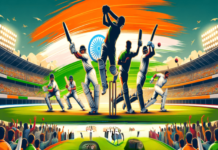BJP overpowered caste divisions to sweep 2014. But the Dalits are angry and the divides are back in play, spelling trouble for 2019. Muslims are just about 15 per cent of the Indian electorate. They don’t vote for the BJP. Even in the post-1989 politics when Congress lost its heartland vote-banks, Muslims joined Yadavs, the most dominant among the Other Backward Classes (OBC), and occasionally Mayawati’s Dalits to keep the BJP out. Frustrated by the arithmetic, BJP leaders would often say that Muslims have a veto on who will rule India.
Narendra Modi changed that in 2014. He junked all symbolisms of political correctness and hypocrisies. If Muslims insist on not voting for us, let them be, there are enough votes elsewhere, was the argument. To his credit, he was quite clearheaded: no special dispensation for minorities, just that all-encompassing “sabka saath, sabka vikas.”
Muslims didn’t vote for him. He swept the polls nevertheless. He won 282 seats without one Muslim MP. This was repeated in the state elections. The BJP didn’t field one Muslim in Uttar Pradesh, which has a 19 per cent Muslim population, and won 77 per cent of the seats. The voodoo of the Muslim “veto” on who rules India was fully broken. He and the BJP responded by not accommodating Muslim names sideways, not bothering to create a new, friendly Muslim political elite. You don’t vote for us, don’t expect us to share power with you.
It happened because his appeal cut across Hindu social groups which had been wary of the BJP so far, or were loyal to their own caste leaders. A large-scale non-Yadav OBC shift to BJP is a 2014 reality. Further, if Mayawati drew a blank out of 80 seats in the 2014 Lok Sabha elections and won just 19, less than 5 per cent in the assembly elections in 2017, it is logical to conclude that a sizeable enough number of Dalit voters shifted to the BJP too. BJP’s 282 MPs in the Lok Sabha included 40 Dalits who won from reserved seats—another six belonged to allies LJP and TDP. This is the reason the BJP could win so handsomely despite being out of the race for 15 per cent of the vote.
The last few months have brought new questions on this as Dalit anger and assertion are rising across the country. It started much earlier, with Rohith Vemula and Una. But with the rise of young and articulate Dalit leaders, mostly out of student and grassroots politics, and Bhima-Koregaon onwards to the latest protests over the Supreme Court’s order on the atrocities against scheduled castes and tribes act, the post-2014, never-mind-the-Muslims, we will contest in a pool of 85 per cent voters approach is looking tricky. Because, continued Dalit anger threatens to reduce it to a perilous 70 per cent. This is the message from three of the party’s Dalit MPs in Uttar Pradesh who’ve complained publicly.
In an article in Deccan Chronicle (31 Aug 2016), Sanjay Kumar, leading psephologist at the Centre for the Study of Developing Societies (CSDS), confirmed that the BJP had got more Dalit votes in 2014 than ever before. “Over the last several Lok Sabha elections,” he wrote, “roughly 12-14 per cent Dalits voted for BJP.” But in 2014, this number doubled to 24 per cent, putting the BJP’s Dalit vote share ahead of the Congress (19 per cent) and the BSP (14 per cent).
The recent Dalit impatience threatens these gains. It is complicated further by the alliance between the SP and the BSP. How potent this can be was evident in the Gorakhpur and Phulpur bypolls. An important fact also is that the BSP, not contesting, was able to transfer its vote.
The three UP MPs who complained are reflecting this new insecurity. New images are also emerging to add to the earlier ones, from Vemula to Bhima-Koregaon, notably that of an upper-caste man firing at a crowd of Dalit protestors in Gwalior. The fact is the government hardly had a role to play in the Supreme Court order on the SC/ST Act. Nor, on a careful reading of the order, does it seem like a dilution of a good law. The sharp, nationwide Dalit reaction and protests show a pent up anger brimming over.
This, the prime minister and Amit Shah cannot overlook, or presume that, come 2019, ‘Modi magic’ will subsume everything. They cannot afford to lose any of the 24 per cent Dalit vote of 2014. Their overall party tally was 31 per cent and without a fourth of Dalits again voting for them, it will be impossible to maintain that percentage. The party you’d presume has already maxed out with the upper castes. That is the reason the prime minister spoke out so strongly on reservations and the well-publicised Amit Shah meal at a Dalit home in Odisha.
The latest phase of Dalit assertion is essentially different from the past. With many more going to school and college, and easy availability of internet, it is a much more aware generation. Its aspirations are not limited to physical protection, food, shelter and preservation of traditional avocations. The young Dalit now wants to break out of that trap. Social media and WhatsApp are also enabling them to network across states. A young leader and first-time MLA such as Jignesh Mevani could attract a sizeable crowd almost anywhere in north, central and western India. This Dalit rise is also more ideological than in the past. The tone and tenor is distinctly Left, and therefore compulsively anti-BJP.
Until 1989, the BJP believed that it wasn’t able to win because of caste divisions in Hindu society. L.K. Advani first acknowledged it and embarked on a project (through Ayodhya) to use religion to re-stitch what caste had divided. It worked to a great extent. But, it ran its course and caste loyalties did not remain subdued for long. As a result, in the entire heartland, BJP got power only patchily. In Uttar Pradesh, where it once had a majority, Mayawati and Mulayam/Akhilesh took turns to be chief minister eight times, including Mayawati and Akhilesh getting two full terms.
The combination Modi-Shah employed in 2014 was more potent than Advani’s a quarter century earlier. They brought in unapologetic Hindutva nationalism, combined with Modi’s magnetism and the “achhe din” promise that looked convincing because of his Gujarat record. This again overpowered all caste-based parties as the BJP made a spectacular sweep of the heartland. This would not have been possible without sizeable votes coming in from unlikely sections of Hindu society — OBCs and Dalits.
The latter is under threat now. As the caste see-saw shifts yet again, disaffections of anti-incumbency, lack of jobs, rise of a powerful upper-caste chief minister in Uttar Pradesh (the first upper caste in 15 years) have all combined to bring caste back in the equation. The BJP has been quick to realise this, Modi and Shah are speaking. But they have three problems: first, that they do not have any prominent and convincing Dalit voices. Second, while in the past BJP had produced a star-cast of OBC leaders including Modi and Shivraj Singh Chouhan, the post-2014 phase has seen the rise of upper castes, notably in large states like Maharashtra and Uttar Pradesh. And third, they may have left it too late, with their party and intelligence machinery failing to pick up the rising Dalit frustration early enough.
The party, however, has joined the issue now. How much damage control it can do will have a crucial bearing on the numbers in 2019.#KhabarLive







